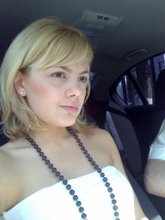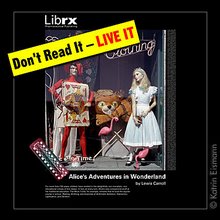This post is here to instruct you should you ever wish to buy a diamond jewellery. Don't be fooled by sweet talk, every merchandiser knows his chit-chat. You should know better than that! Be smart, be informed!

Common Cut Diamond Shapes
The most common shapes of diamonds seen in jewelry are pictured above. They include: Emerald, Heart, Pear, Round Brilliant, Marquise, Radiant, Oval and Princess Cuts. Numerous variations exist on the above shapes, many of which may contain Trade marks as to the use of their names. Other common cuts not shown above include Baguettes (both straight and tapered), Triangle, Half Moon, Star, Cushion, Flanders, Asscher, as well as Fantasy Cuts. Often Colored Stones and increasingly more often, diamonds may be Mixed Cut. These stones may possess a crown (top) with one cutting style and a pavilion (bottom) with another. It is the combination of faceting styles which ultimately gives each stone it's own personality in the form of brilliance (reflected white light) and dispersion (refracted spectral colors).

The Diamond Color Scale
The color scale runs the alphabet from D - colorless to Z - light yellow, brown, or gray color. D is the rarest color and thus the most valuable.
Diamonds most often form in nature with nitrogen impurities in their atomic structure. Irridiation may cause a green colour. An extremely rare purple diamond from Brazil has recently turned up in London. Fancy colours can be quite valuable.
Nitrogen impurities causes diamonds to show a subtle tint of yellow color. As you move down the color scale the diamonds become more yellow (or brown or gray) and thus less valuable.
Some interesting facts about special colours:
Fancy Colored Diamonds
Fancy Yellow diamonds can command prices as high as D colors or more. Colors below the Z range are considered to have color as an asset and are graded into the fancy color range. The fancy color ranges are as follows: Fancy Light - Fancy - Fancy Intense - Fancy Deep - and Fancy Vivid. While Fancy Yellow is more common, Fancy Colored Diamonds can and do occur in every possible color. Often the color is described with a secondary mixed color preceding it.
Ex: Fancy Intense Orangy-Yellow, with yellow, the second color mentioned, being the predominant color.
So, to summarize, there are Colorless Diamonds (D, E, F), Near Colorless Diamonds (G,H,I), progressively off colored diamonds (J-Z), being yellow, brown, or gray, and Fancy Colored Diamonds.
(click on the picture to the right to see enlarged view-->)
Fancy Colored Diamonds are not always "Natural". Their color may have been modified or enhanced through one or more processes involving irradiation and/or extreme heat. While this enhancement may in fact be permanent, the occurrence of natural color in diamond is far more rare and thus more expensive. The tests for identification of "origin of color" are usually conclusive, but may require sophisticated equipment and extremely qualified testers. It is highly recommended to have the G.I.A. confirm the origin of color, as natural, in any fancy colored diamond of enough size to warrant it.
The Brown Color Group
Brown diamonds have a tint of brownish body color. The brown group is usually less expensive than any other group due to the fact that they are less appealing to most consumers. In their lightest tones, they face up reasonably white in a yellow setting. These stones are often described as "TLB" or Top Light Brown. The brown group is graded by tone, from light to dark in much the same way as other diamonds, however their appearance may be slightly whiter than a diamond of slightly yellowish body color, in the same color grade range. Establishing the correct value with regard to significantly brown diamonds is difficult. The Argyle mines in Australia produce a significant quantity of brown diamonds, and have successfully marketed them using the descriptive names, "cognac" and "champagne".
The common shades are:
Very light brown (champagne), medium brown (champagne), Brown (dark champagne), and Dark brown (fancy cognac). A color scale has been devised by the Argyle Mines of Australia for use in grading these diamonds using C1 - C7 grades to separate them into their progressively darker tonal ranges.
In spite of the significant marketing efforts of the Argyle Mines, demand for the brown diamonds is not great and they generally command relatively low prices.


Now regarding prices you have to know about:
The Rapaport Diamond Price Sheet is the industry- wide standard for diamond price information. Weekly service covers changes that occur in the market for rounds and is mailed out every Friday. It also includes the Monthly Price Sheet, which comes inside RDR magazine. To get the latest prices immediately, you can have the Weekly Price Sheet faxed to you every Thursday night.






No comments:
Post a Comment